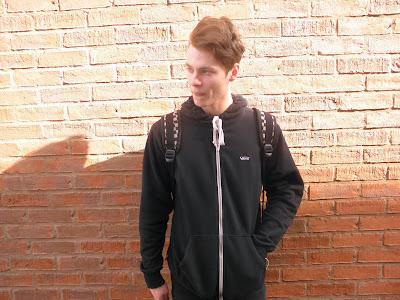Camera Framing's
Extreme Close Up
This shot is to show specific detail to a paticular part of the person, in this example the eyes.
Close up
This shot is what you would normally take of someone's face so it concentrates on their face only.Medium Close up
This particular shot is taken from the waist upwards. It presents the models facial expression and features well and it also shows the models body from the waist upwards. This specific shot is most commonly used in adverts and magazines.
Long shot
Commonly used to demonstrate the models full body or the back ground. This could also be used to advertise an outfit in a clothing advert because it shows the whole body and presents the clothes that the model is wearing.
High shot
The camera is positioned above the eye line and the camera is looking down at the subject, this angle is typically used to make the person look smaller then they actually are or to portray a certain type of emotion or vibe which the magazine or advert etc might me trying to present.
Low shot
In this shot the camera is positioned below the eye line and the camera is looking up at the subject and is typically used to make the model or object look larger and portray them in a dominant and confident way.
Two people in the shot
This is just two people in the shot.
Image framed to the right
This position is where the model or object is positioned in the right hand side of the shot to give emphasis on the position.
Image framed to the left
This position is where the model or object is positioned on the left hand side of the shot to give the position a certain degree of effect or meaning.
Image is central
Finally this position is where the model or object is positioned central to portray the model as important.










No comments:
Post a Comment